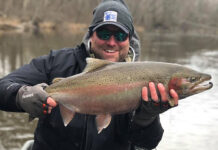I was recently asked about getting walnut seedings established by a landowner who had attempted several nut placements around his property with no success.
We discussed possible problems that may have prevented his success. Then, I thought, what do foresters say about this.
Planting walnut seeds
Our local service forester referred me to the Walnut Council website. Here is what they say about it.
Collecting walnuts. “For black walnut, collect walnuts after they fall to the ground. Remove the husks and place the nuts in water. Those nuts that float on the water are not viable and can be discarded. The good, viable nuts will sink to the bottom.
When to plant. “Sow walnuts in the fall or stratify (store in a chilled moist environment) the nuts at 34 to 41 F for 90 to 120 days and plant in the spring. Walnuts should be planted 1 to 2 inches deep.”
Where to plant. Remember, walnuts prefer moist/well-drained soils.
Now you know!
Forestry tax law
In Medina County, we have over 300 landowner participants in the Ohio Forestry Tax Law program with the ODNR Division of Forestry and our local county auditor.
Every couple of years we host an informational meeting for landowners to learn about the program. The tax benefits and requirements are reviewed.
This year’s event will be Jan. 30 from 6:30 to 8 p.m. at the Lafayette Township Hall, 6776 Wedgewood Road (state Route 162) Medina. It is free to attend. Call 330-722-9315 to register.
Big tree contest
This year’s contest will be for the pin oak, a tree which can grow relatively quickly and reach up to 90 feet, prefers poorly drained soils and has no tap root, and likes to find tile lines and plug them up.
The deadline for entry in Medina County is this summer. The winner will be recognized at our annual meeting in October. Measurements are based on circumference at 4.5 feet, tree height and canopy spread.
Beech tree disease
Another problem arising is now the Beech Leaf Disease. Located currently in Northeast Ohio, including Ashtabula, Lake, Geauga, Cuyahoga and even Medina County, the disease is moving in from Pennsylvania and New York State to Ohio. The leaves of the tree will show dark shading between leaf veins, then curl, shrivel, turn yellow or brown and die.
Tree seedlings
Most Soil and Water Conservation Districts in each county will be making seedlings available to purchase the next few months. Selections of evergreens, hardwoods, softwoods, shrubs and other associated items will be offered for reasonable prices. One piece of advice is to order early before your preference may be sold out.
We here at Medina County have about 30 choices.
Logging methods
I have noticed an increase in milling on site is a common practice for some loggers. They say for efficiency and costs. That is probably true.
Two things I have noticed with this practice is it appears that cutting of trees down to 8 inches in diameter is common for certain species. This could affect long-term management of the harvested area.
The other noticeable condition is the stockpiles of sawdust that get accumulated. Unless removed for other purposes, the sawdust piles could cause tainted rainwater runoff from the landing area of the milling.
Hopefully, these sites are away from streams.













